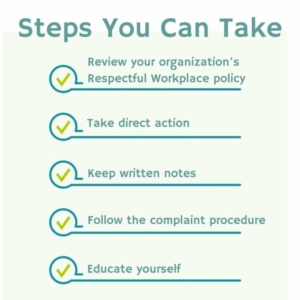Notices about workplace safety meetings don’t generally receive quite the same attention from employees as a Justin Timberlake or Bruno Mars announcement that they will be performing at your next ‘brown bag’ lunchroom meeting.
Having said that, although their messages will be packed with feel-good emotional content, will it keep you safe in the long run?
Will their melodic messages build a series of lifelong habits that will constantly remind you to “look before you cross the road?” or “don’t text on your phone while driving?”
Probably not.
The traditional image of workplace safety involves hi-visibility vests, hard hats, eye and ear protection equipment, and other obvious devices designed to protect employees from hazards.
Most typical hazards are easy to see if you are paying attention:
- The wobbly ladder
- The broken window
- The frayed power cable
- The hole in the sidewalk
- The liquid spill
Each of these examples is right there in front of you to see and respond to.
However, the hazards that we talk about at Fiore Group Training are NOT those sorts of hazards.
The hazards we focus on are those that hide in plain sight- the ones that are right in front of us every day but we never seem to see them until it’s too late!
You may be at the edge of your seat wondering what I’m talking about exactly.
Those hazards, unfortunately, can be our co-workers, and we usually don’t see them as being an obvious workplace safety risk.
Until, that is, we suddenly realize that the reason we don’t like going to work anymore is because of the anxiety of having to be in that office meeting with him or her.
There are many behaviours that the workplace bully demonstrates, creating this feeling of anxiety for us.
Some of these behaviours may look like:
A cavalier attitude (especially to safety), dumping responsibilities, favouritism, humourlessness, inability to cope with failure, inability to plan ahead, inconsistency, ingratitude, insensitivity, insincerity, constant interference, a Jekyll and Hyde persona, mood swings, a need to assert their authority, negative language, poor listening skills, self-importance, constantly shifting goalposts, an unwillingness to accept responsibility, an unwillingness to acknowledge, an unwillingness to apologize, an unwillingness to cooperate, trivializing important issues, and vindictiveness.
Do any of these sound familiar to you?
We (you) know from previous experience that at some point these people will make some demeaning comment about our work, make a “joke” at our expense, or remark openly about some personal feature of ours to the rest of the employees in the office.
We (you) try to remind ourselves that it is ‘just the way they are’ and they have been that way since you first got the job.
Unfortunately, this is not just a person with whom you simply have a difference of opinion or someone who does not share your sense of humour or work ethic.
No. This person is a bully.
So, what should you do now that you’ve identified this co-worker as a bully?
Well, once you identify the person’s behaviour as bullying behaviour, it will represent a turning point for you. You’ll finally understand that there is nothing wrong with you and that the behaviours exhibited towards you are not your fault.
Most people who are bullied are kind, conscientious, caring people, who are good at their job, popular with people, and successful – all of which are qualities the bully lacks.
Our society encourages us to look up to those people who have great experience, who are leaders, who are managers and authority figures. Therefore, it comes as a surprise to find out that someone you have trusted – or should have been able to trust – is not the person they purport to be.
But don’t worry; there are steps you can take to help resolve these issues:
 Review your organization’s Respectful Workplace Policy (or Bullying and Harassment Policy). In our training sessions, we always advise participants to examine this document first if they are wondering about what to do in a workplace situation, since that policy will guide them appropriately. Most policies discuss the option of speaking to the person directly about their offensive or disrespectful behaviour – it is to be viewed solely as an option, however, and by no means mandated as being a compulsory first step.
Review your organization’s Respectful Workplace Policy (or Bullying and Harassment Policy). In our training sessions, we always advise participants to examine this document first if they are wondering about what to do in a workplace situation, since that policy will guide them appropriately. Most policies discuss the option of speaking to the person directly about their offensive or disrespectful behaviour – it is to be viewed solely as an option, however, and by no means mandated as being a compulsory first step.
- Take direct action. If you have decided to speak to the person directly, let that person know that you’d like the behaviour to stop. Sometimes the person isn’t aware that his or her words or behaviour are offensive or seen as bullying. Sometimes, calling the person out on their behaviour is enough to make it stop. To have a successful conversation with that person, it is sometimes helpful to reach out for assistance in order to gain confidence and competence in being an effective communicator.
- Keep written notes. Keep a written record of the behaviours you have found to be objectionable and disrespectful bullying or harassment- include dates and times, and any witnesses that were present. Also, keep a written record of what you said to the person to try to stop the behaviour. These notes are useful as reference in any conversation you have with a support person with whom you discuss the situation.
- Follow the complaint procedure policies. If you have spoken to the person to stop their behaviour and the behaviour continues or if you don’t feel confident or competent enough to talk to the person about their behaviour, follow the next step in your organization’s policy. There is a legal requirement for your organization to list the steps that should be taken in responding to workplace bullying and harassment.
You should have also received training on this process- but since not everyone remembers what to do at the time when they need to do something about it, reviewing your organization’s policy is a vital step. Oftentimes, this policy will direct you to talk to your supervisor or with someone who deals with human resource issues. Your organization’s policy might suggest mediation or an investigation, following a formal complaint received by the Human Resources office. Educating ourselves on what is and what isn’t appropriate and respectful behaviour is key.
Once you can name it, it becomes easier to deal with.
It seems sad that we must have a law in British Columbia (and coming to Alberta in 2017) that says, “Please play nicely with your co-workers.”
But unfortunately, we do need it because there are people out there who don’t play nicely, causing a world of hurt for folks.
Remember, the more that we know, the less they can hide- even if they are standing right in front of us.







Leave A Comment